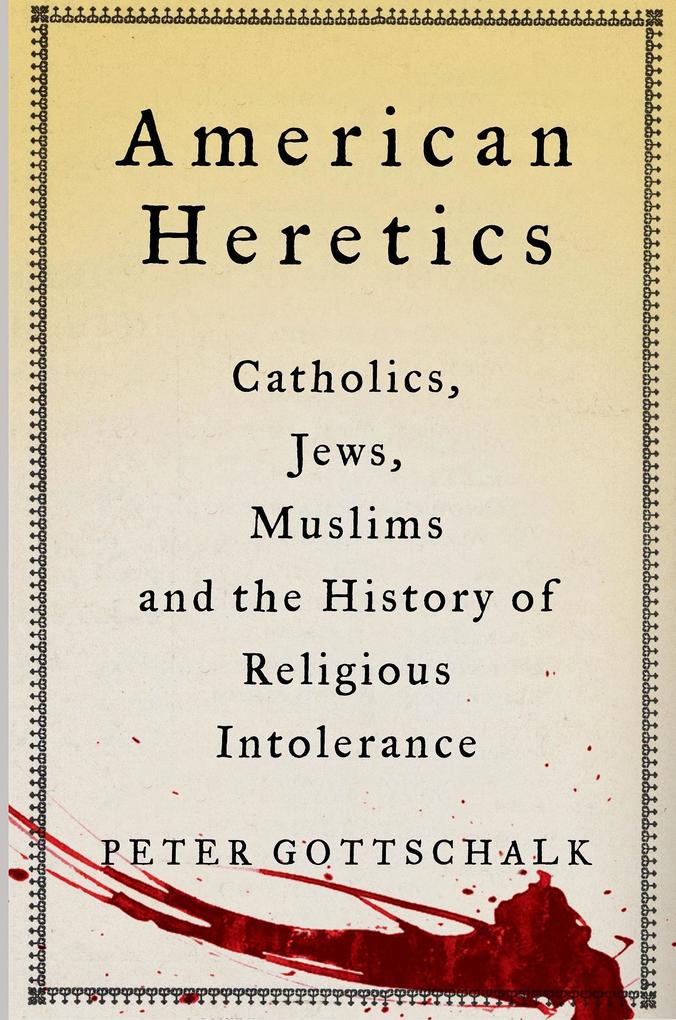
Zustellung: Fr, 04.07. - Mi, 09.07.
Versand in 2 Wochen
VersandkostenfreiBestellen & in Filiale abholen:
American Heretics traces the arc of American religious discrimination. Through each religion's unique history, the book shows that groups from Quakers to Judaism have been subjected to similar persecution. Today, many of these are embraced - giving hope to today's Muslims, Sikhs, and others now under fire.
A journey through American history that reveals an unsettling pattern of religious intolerance, from colonial anti-Quaker sentiment to modern-day Islamophobia.
A journey through American history that reveals an unsettling pattern of religious intolerance, from colonial anti-Quaker sentiment to modern-day Islamophobia.
In the middle of the nineteenth century a group of political activists in New York City joined together to challenge a religious group they believed were hostile to the American values of liberty and freedom. Called the Know Nothings, they started riots during elections, tarred and feathered their political enemies, and barred men from employment based on their religion. The group that caused this uproar? : Irish and German Catholics-then known as the most villainous religious group in America, and widely believed to be loyal only to the Pope. It would take another hundred years before Catholics threw off these xenophobic accusations and joined the American mainstream. The idea that the United States is a stronghold of religious freedom is central to our identity as a nation-and utterly at odds with the historical record. In American Heretics, historian Peter Gottschalk traces the arc of American religious discrimination and shows that, far from the dominant protestant religions being kept in check by the separation between church and state, religious groups from Quakers to Judaism have been subjected to similar patterns of persecution. Today, many of these same religious groups that were once regarded as anti-thetical to American values are embraced as evidence of our strong religious heritage-giving hope to today's Muslims, Sikhs, and other religious groups now under fire.
Inhaltsverzeichnis
Introduction
Chapter One: Heretics! Blasphemers! Witches! : Quakers in Colonial America
Chapter Two: Legal Impositions: Fear of Mormon Law in the Mid-Nineteenth Century
Chapter Three: Heathens: The Sioux and the Ghost Dance
Chapter Four: UnAmerican and UnChristian: Irish Catholics
Chapter Five: Jews in the Eyes of the Ku Klux Klan and Henry Ford
Chapter Six: It's Not a Religion, It's a Cult: The Branch Davidians
Chapter Seven: All of the Above: Islamophobia and Anti-Muslim Sentiment Today
Conclusion: How We Can Do Better
Chapter One: Heretics! Blasphemers! Witches! : Quakers in Colonial America
Chapter Two: Legal Impositions: Fear of Mormon Law in the Mid-Nineteenth Century
Chapter Three: Heathens: The Sioux and the Ghost Dance
Chapter Four: UnAmerican and UnChristian: Irish Catholics
Chapter Five: Jews in the Eyes of the Ku Klux Klan and Henry Ford
Chapter Six: It's Not a Religion, It's a Cult: The Branch Davidians
Chapter Seven: All of the Above: Islamophobia and Anti-Muslim Sentiment Today
Conclusion: How We Can Do Better
Produktdetails
Erscheinungsdatum
12. November 2013
Sprache
englisch
Seitenanzahl
256
Autor/Autorin
Peter Gottschalk
Verlag/Hersteller
Produktart
gebunden
Gewicht
592 g
Größe (L/B/H)
235/157/20 mm
ISBN
9781137278296
Entdecken Sie mehr
Pressestimmen
A must read in a 21st century when religious pluralism and religious intolerance are a global challenge. Peter Gottschalk's American Heretics is a unique and powerful study and critique, a corrective to many American's amnesia about our past history of religious intolerance and, in his last chapter, a wakeup call to "The Sum of All Fears: Islamophobia and Anti-Muslim Sentiment." --John L. Esposito, author of "The Future of Islam" and "Islamophobia and the Challenge of Pluralism"."American Heretics is a heartfelt plea to Americans to take responsibility for their xenophobia and racism. Gottschalk is relentless in presenting the grimy shame of U.S. nativism, giving new detail to both past and current events we thought we knew, all the while insisting that all Americans share in this shame." -- Winnifred Fallers Sullivan, Chair, Department of Religious Studies, Indiana University Bloomington
Bewertungen
0 Bewertungen
Es wurden noch keine Bewertungen abgegeben. Schreiben Sie die erste Bewertung zu "American Heretics" und helfen Sie damit anderen bei der Kaufentscheidung.









